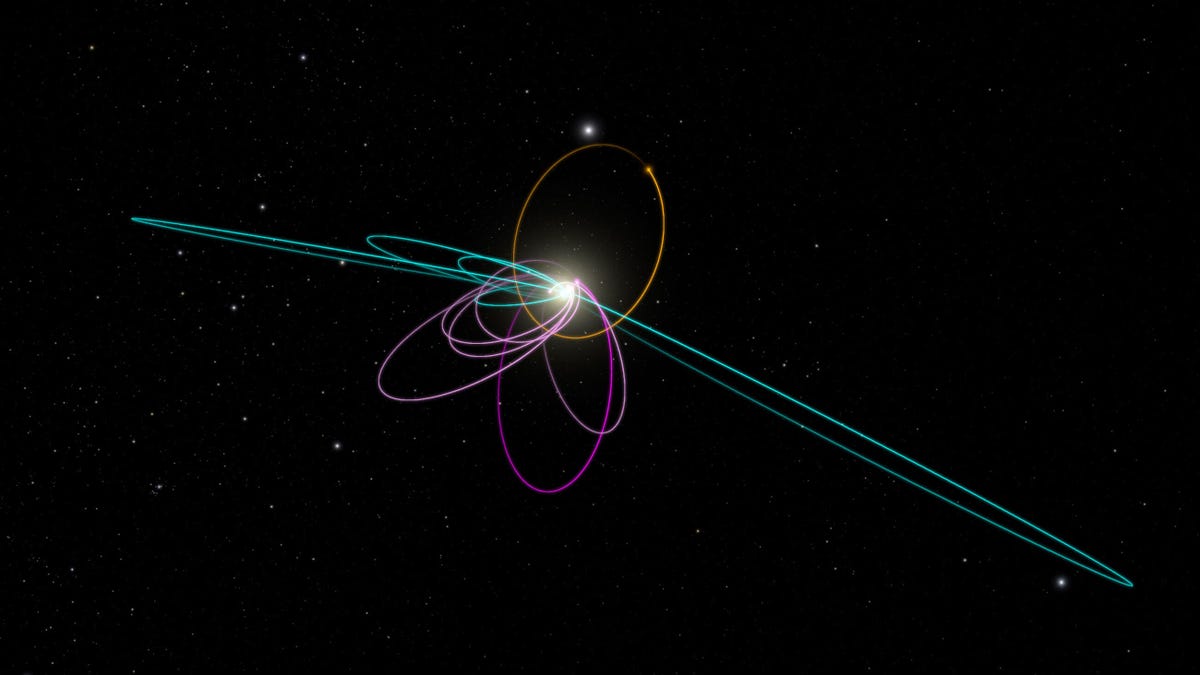'Any evidence for Planet Nine is gone': Scientists dispute probability of mystery planet
Is there a hidden ninth planet far from the sun affecting the orbits of distant space rocks? New research pours cold water on the theory.

In the 1820s, French astronomer Alexis Bouvard speculated that Uranus' irregular orbit was being influenced by an eighth planet in our solar system, leading to the discovery of Neptune. In 2016, citing the unusual trajectory of planetoids in Neptune's orbit, two astronomers from the California Institute of Technology predicted there was another planet lurking in the solar system: Planet Nine.
The theory has gained traction, no small achievement given the quackery that's historically surrounded predictions of a ninth planet. However, it's attracted plenty of doubt too.
Last week, a team of researchers led by the University of Michigan's Kevin Napier published a preprint (yet to be peer reviewed) paper they say discredits the evidence often used to support Planet Nine. "The long story short is, any evidence for Planet Nine is gone," tweeted Stephanie Deppe, a co-author of the paper.
First, the theory behind Planet Nine. The hypothesis of an as-yet-undetected major planet revolves around extreme trans-Neptunian objects, or ETNOs -- mini planets whose orbits around the sun extend far beyond Neptune. (Really far beyond -- over 750 million miles beyond.) In 2016, two Caltech researchers, Michael Brown and Konstantin Batygin, published a paper examining the unusual orbits of six ETNOs -- the orbits are elliptical rather than circular, and at an angle that causes them to approach the sun at almost the same point.
Six ETNOs observed by Caltech researchers Michael Brown and Konstantin Batygin had unusualy elliptical orbits (purple) that cluster around the sun at nearly the same point. Brown and Batygin say their orbits have been distorted by Planet Nine, which lives far beyond Neptune.
That this cluster of orbits would occur by coincidence runs a 0.007% chance, Brown and Batygin estimate. They hypothesize the ETNOs came into contact with Planet Nine's gravitational pull, distorting their orbits. The astronomers even ran a simulation that calculated Planet Nine dimensions: a radius two to four times as large as Earth's, with a mass five to 10 times as great.
The new research, by the team led by Napier, doesn't completely rule out the existence of Planet Nine, but rather argues it's far less likely than Brown and Batygin think.
A key part of the issue is biased data. ETNOs are far away and relatively small, making them hard to see. Astronomers are only able to spot them when ETNOs are orbiting close to the sun. To achieve this, telescopes are adjusted to see a certain part of the sky, at a certain part of the year, at a certain time of day. This method biases the data sample, Napier's team's paper argues.
So the team pulled data from three different telescopic surveys and evaluated the movement of 14 ETNOs, none of which were included in Brown and Batygin's 2016 paper, and accounted for selection bias using a computer simulation. Sparing you some incomprehensible astronomy, their finding was that what was previously thought to be a "cluster" of ETNOs is actually just selection bias. "TL;DR: You find [ETNOs] where you look", one of the researchers pithily explained in a tweet.
In simpler terms: Planet Nine probably doesn't need to exist in order for these ETNOs to have the orbits they do.
"It is important to note that our work does not explicitly rule out Planet X/Planet 9," the paper reads. "Instead, we have shown that given the current set of ETNOs from well-characterized surveys, there is no evidence to rule out the null hypothesis."

